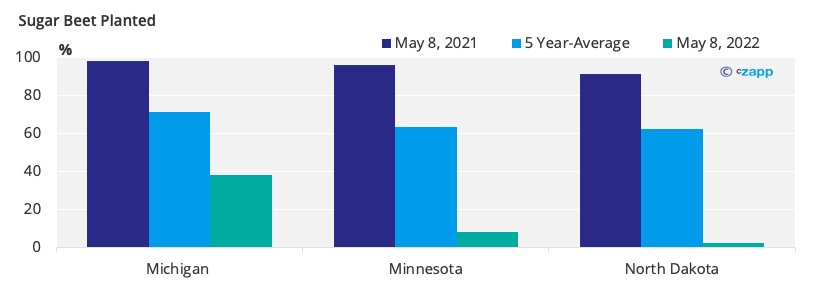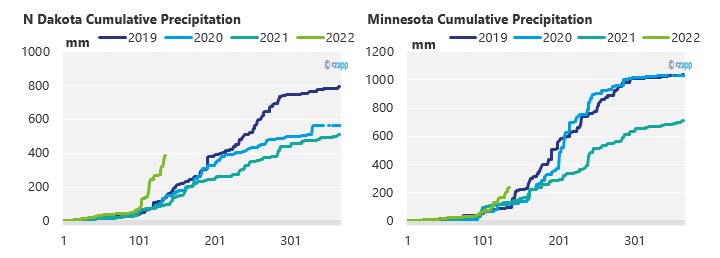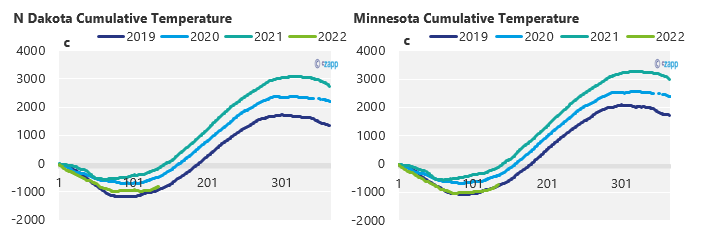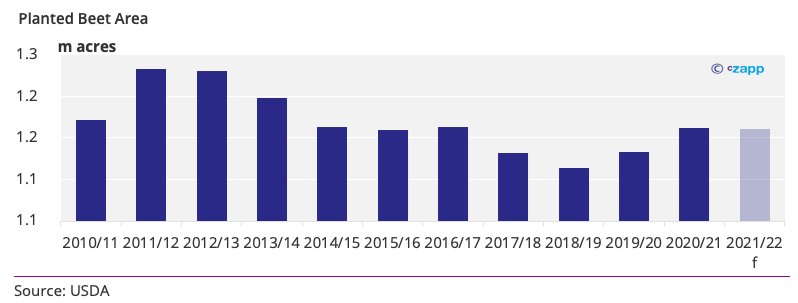Insight Focus
- US farmers have delayed beet planting due to wet weather.
- As a result, farmers worry that this might reduce yields.
- A significant drop in sugar production could mean higher imports from Mexico and TRQs
US beet planting is being delayed by unseasonably high rainfall as well as low temperatures that have kept the ground wet and cold. So far, planting has been later than the five-year average in Michigan, Minnesota, and North Dakota. This could result in farmers being faced with two potential outcomes: having to harvest the beet before it is fully developed, risking yields; or leaving it longer in the ground with the risk of frost damage and losing the crop entirely.

Usually, farmers try to plant as much beet as possible by May to optimise yields and lift them before there is any frost.
Record Rainfall, Cold Hamper Planting
Once the snow has melted and the fields have dried out, farmers normally start planting beet. However, farmers in North Dakota and Minnesota are struggling to start planting due to rainfall hitting a five-year high in April.

If this continues in May farmers will have to delay planting further, which will not give the beet as much time to mature as they would like.
In addition to heavy rainfall, temperatures in both states have been lower than in the last two years.

Farmers are starting to worry there may be parallels with 2019 when planting was delayed, which in turn meant the beet was left in the ground to mature but was then hit by a severe frost which cut the crop by 22% in Minnesota and 29% in North Dakota. Since, the freeze happened late in the year, the impact was not felt until January and February 2020 where there was a shortage of sugar in the centre of the US which increased domestic prices in the region. As a result, the USDA ended up allowing emergency quotas for both raw and refined sugar to meet demand.
There are also similar weather patterns in Michigan, where beet planting has been delayed due to cold and rainy weather.
What does this mean for US sugar supply?
At the end of March, the USDA cut its estimate of the beet acreage without taking the weather in April into account. The planted area is forecast to shrink by 1.4% compared with 2021. This number could be cut further if farmers are unable to plant beet.

With acreage and yields potentially taking a hit from the weather, sugar production might also fall. This would mean that the US would have to increase tariff-rate quota (TRQ) allocations and sugar imports from Mexico. Increasing imports would mean that more raw sugar would be coming in to be refined. US refineries can plug the potential gap left by a poor beet crop if they can import the sugar on time. This means that if the US raises TRQs on time, there will be enough sugar to cover domestic consumption, preventing what happened in 2019. However, buyers in the central parts of the US might have to pay higher domestic freight costs as the refineries are on the Pacific and Atlantic coasts.
Other Insights That May Be of Interest…
Brazil and USA to Boost Fertiliser Output on Russian Invasion
Will Mexico Become a Regular World Market Sugar Exporter?
Explainers That May Be of Interest…














